Recover Deleted Call Recording on Xiaomi[Free Download]
This article guides Xiaomi users on how to recover deleted call recordings—explaining what happens under the hood, introducing multiple methods including our in-house tool, and providing detailed step-by-step instructions for success.
The title “How to Recover Deleted Call Recording on Xiaomi?” immediately signals three key elements: first, the focus is on recovery; second, the specific item is deleted call recording; and third, the target device brand is Xiaomi. That means this article must address the scenario of a user using a Xiaomi phone (or a Xiaomi-branded Android device) who has lost or accidentally deleted a recording of a phone call. We therefore need to cover: how Xiaomi stores call recordings, why they may get deleted; how one can attempt recovery; and practical actionable methods (including one using our proprietary software). We must use relevant keywords (e.g., “Xiaomi call recording recovery”, “deleted call recording Xiaomi”, “recover call recording Xiaomi phone”, “Xiaomi data recovery”, etc.) and make the article accessible yet technical enough to help readers feel confident.
Guide List
- Introduction: Understanding the Problem
- Solution 1: Use Our Own Software – iDATAPP Android Data Recovery
- Solution 2: Check Xiaomi’s Built-in “Trash” or “Recently Deleted” Folder
- Solution 3: Restore from Xiaomi Cloud or Google Drive Backup
- Solution 4: Use a File Manager to Inspect the Internal “CallRecorder” Folder & Attempt Manual Undelete
- Solution 5: Preventive & Repair-Based Approach — Use Xiaomi’s System Repair + Audio Backup Strategy
- Additional Considerations & Technical Insights
- Frequently Asked Questions
Introduction: Understanding the Problem
So you’re using your Xiaomi smartphone and you realise: “Hey — I accidentally deleted a call recording and now I need it back.” Perhaps the recording was saved in the built-in call recorder app (Xiaomi has one in its MIUI interface), or perhaps you used a third-party recording tool, or maybe the phone updated and wiped something. You might search “deleted call recording Xiaomi” and find lots of generic advice. But the specific combination—Xiaomi platform, call recordings, deleted file—means a few things:
- On Xiaomi devices (running MIUI), call recordings may be stored in a specific folder (often under “/Recorder/Call/” or “/MIUI/CallRecorder/”), or they may be saved under a hidden system directory. When you delete a file, the record may be removed from the index, but the underlying data might persist until overwritten.
- Because of Android’s file system (and MIUI modifications), deletion does not always mean zero chance of recovery—but there’s a window of opportunity before new data is written.
- Moreover, Xiaomi’s built-in backup and sync features (e.g., Mi Cloud, Google Drive, local backups) may or may not include call recordings depending on settings.
- Many online articles talk about general photo recovery or file recovery on Android, but fewer focus specifically on call recordings on Xiaomi, which means we have to tailor the advice.
Thus, the problem is: you deleted or lost a call recording on a Xiaomi phone, and you want to attempt recovery. Fear not: the good news is that in many cases, recovery is possible (especially if you act quickly and avoid writing new data). The bad news: success isn’t guaranteed—there are variables (how long ago deletion happened, how much writing has occurred since, whether the file got overwritten, whether root access is needed, etc.). But with the right strategies you increase your chances.
In the sections ahead I’ll propose three to five distinct solutions. One of them will be using our own software (the one from our website, Android Data Recovery by iDATAPP). The others will be native or semi‐native methods you can try manually or using built-in features. Each will include detailed steps and considerations.
Solution 1: Use Our Own Software – iDATAPP Android Data Recovery
Why this method first? Because it gives you a high-chance automated recovery path without needing to rely purely on native backups. The software is designed for Android devices (including Xiaomi) and supports recovering call logs, messages, audio, etc.
With iDATAPP Android Data Recovery you connect your Xiaomi device to a PC, let the software scan both internal storage and any attached SD card, then preview and recover the deleted call recording. The benefit: it can search deep sectors that ordinary file managers can’t access, giving you a strong chance of retrieving the recording file (typically an audio file with .amr or .mp3 extension). The tool supports over 6,000 Android devices, and doesn’t require the phone to be rooted for basic scan in many cases.

Steps & details to consider:
1.Download and install iDATAPP Android Data Recovery on your computer (Windows or Mac) and select Android Data Recovery.
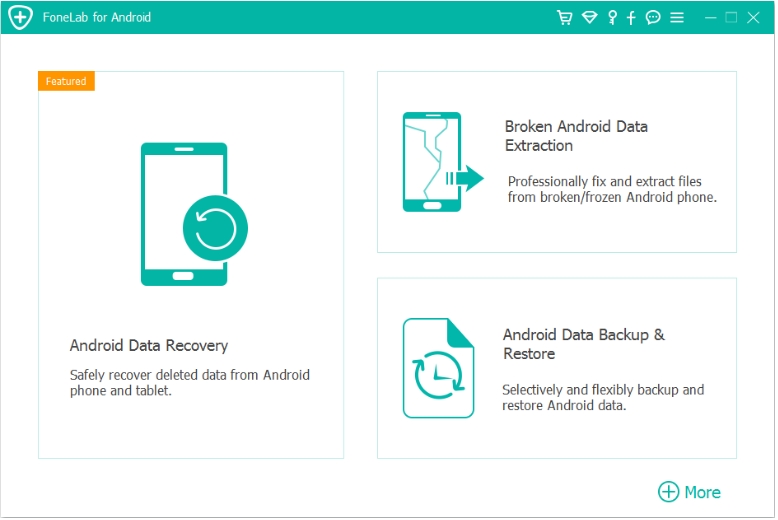
2.On your Xiaomi phone go to Settings → About phone → MIUI version, and tap several times if needed to enable Developer options; then enable USB debugging (Settings → Additional settings → Developer options → USB debugging).
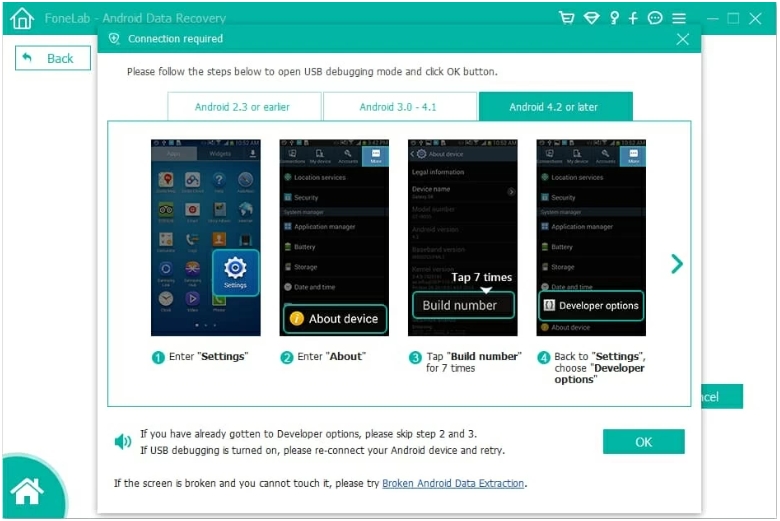
3.Connect the phone via USB cable to your computer.
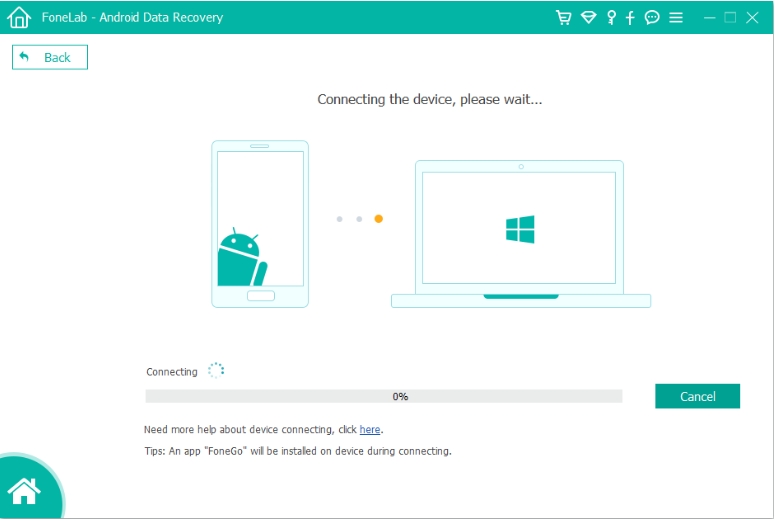
4.Launch the software on your computer, select the “Call logs” (or “Audio”) data type for scan.
5.Click “Next” and wait until it completes (depending on storage size, time may vary).
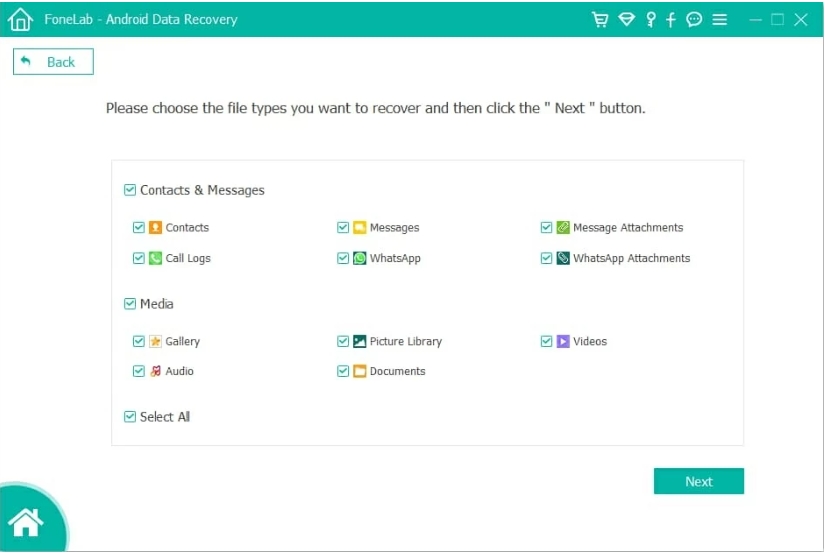
6.After scanning, the software will present a list of recoverable items—look for file names, timestamps, maybe the date/time of the call. Preview the potential matches.
7.Select the correct recording(s) and click “Recover” to save them to a safe folder on your computer (avoid saving back to the phone’s internal storage to minimize overwriting).
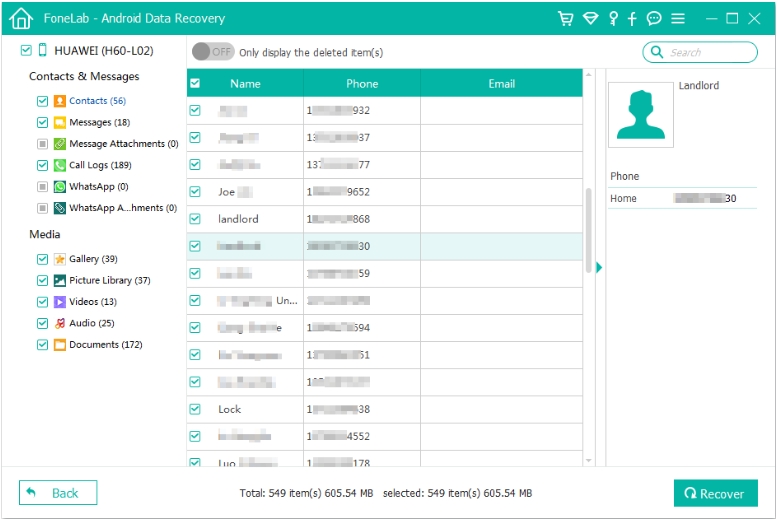
8.Once recovered, copy the file back to your phone or external storage, play it to verify the audio quality.
Important details to keep in mind:
- Stop using the phone for heavy tasks (especially recordings, downloads, camera use) once you notice deletion; continuing to use the device increases the chance of overwriting the deleted file.
- If the phone uses encryption (common on Xiaomi devices), the software handles typical encryption but there are edge cases—review the software’s documentation.
- If the deleted call recording was on an external SD card, you might remove the card and connect via card-reader for more effective scan.
- There is no 100% guarantee: if the recording has been overwritten or the file system cleaned up, recovery may fail. But this method gives the best automated chance.
Solution 2: Check Xiaomi’s Built-in “Trash” or “Recently Deleted” Folder
Sometimes deletion isn’t immediate removal from physical sectors; modern file managers or recording apps on Xiaomi phones may include a “Trash” or “Recently Deleted” folder (for example under the built-in Recorder or File Manager app). If you act quickly, the deleted call recording might still reside there. This is the easiest method—no PC required—and can be done within minutes if you realise the mistake early.
Steps & details to consider:
- Open the “Recorder” app (or whichever app you used to make the call recordings).
- Look for a menu or folder labelled “Deleted items”, “Bin”, “Trash”, or “Recently Deleted”. If present, tap it.
- Browse for recordings—look at timestamps approximate to when the call was made. Select the recording and choose “Restore” or “Move to folder”.
- If you moved the recording before deletion to a custom folder, also check that folder’s trash (in the File Manager).
- After restoration, go to the standard recordings folder and verify playback.
- To avoid future loss, change settings so that deleted items are kept for a longer period (if the app offers it).
Important details to keep in mind:
- Make sure you check both internal storage and SD card if applicable.
- The “trash” retention period is often limited (e.g., 30 days), so this only works if you act quickly.
- If you used a third-party call recorder (not built-in), then that app’s trash folder may differ—or may not exist.
- If you don’t see a trash folder, this method may not apply and you’ll rely on deeper recovery techniques.
Solution 3: Restore from Xiaomi Cloud or Google Drive Backup
If you had enabled automatic backup on your Xiaomi device (via Mi Cloud) or opted into Google’s backup services (Google Drive/Backup), there might be a copy of your call recording or at least your call log that clues you to reconstruct it (or re-download a backup). While call recordings may not always be included by default, you might find a broader backup that contains audio or app data. This method leverages cloud-based backup rather than device-local scanning.
Steps & details to consider:
- On your Xiaomi phone go to Settings → Mi Account → Mi Cloud → Manage backups (if using Mi Cloud); or Settings → Google → Backup (if using Google).
- Check whether “Call recordings”, “Audio”, or “App data” are backed up. If yes, identify the date of the last backup before deletion.
- If needed, perform a device restore to that backup point: be aware this may overwrite current data. Alternatively, in Mi Cloud or Google Drive web interface, browse backup items and download the required file (if available).
- After restoring, open the Recorder app (or file location) and check for the recovered call recording.
- Once successfully restored, make a fresh copy (copy it to computer or cloud) and ensure the phone settings keep backups turned on.
Important details to keep in mind:
- Some Xiaomi backup settings exclude call recordings by default—check your own settings.
- Restoration may replace other recent data; proceed only if you’re comfortable with that trade-off or if the call recording is very important.
- If you restored from backup and the recording still isn’t present, the backup didn’t include it; you’ll need to use deeper recovery methods.
- Always make a manual backup of any recovered file once you regain it to prevent future loss.
Solution 4: Use a File Manager to Inspect the Internal “CallRecorder” Folder & Attempt Manual Undelete
On many Xiaomi devices, the built-in call recordings get saved to a folder like “/MIUI/sound_recorder/call_recorder/” or “/Recorder/Call/”. If you can’t recover through trash or cloud, you can attempt a manual “undelete” approach: stop using the phone’s storage, use a file manager app (or connect to PC), navigate to that folder, look for hidden or temporary versions (sometimes extensions like .amr.tmp), and rename or restore them. This method is less automated but gives you hands-on control.
Steps & details to consider:
- Immediately cease recording new calls, taking new photos/videos, or heavy file transfers on the phone.
- Using the File Manager app on the Xiaomi phone or via PC (when connected in MTP mode), navigate to internal storage → “/MIUI/sound_recorder/call_recorder/” (or similar). If you used third-party call recorder, check that app’s folder (e.g., /CallRecord/).
- Enable “Show hidden files” in the File Manager. Look for any files with odd extensions (e.g., .amr.tmp, .mp3.bak) or timestamps matching your call time.
- If you find a candidate file, copy it to another folder (or PC) and rename it to .amr or .mp3 if needed, then test playback using a media player.
- If the file cannot play, you may attempt a deeper scan from PC using our software (Solution 1) or similar.
- Once recovered, back it up externally (USB, cloud, etc.) for safety.
Important details to keep in mind:
- The manual method is less reliable than automated software for deeply deleted files because once the file table entry is removed, the typical undelete may not succeed.
- Make sure the storage location you’re inspecting is indeed where recordings were stored (custom call recorder apps can use different folders).
- Avoid moving files back and forth in the same storage location before recovery is complete—this may overwrite the deleted sectors.
- If you’re comfortable with PC tools and storage-sector scanning, this manual method can serve as a complementary backup plan.
Solution 5: Preventive & Repair-Based Approach — Use Xiaomi’s System Repair + Audio Backup Strategy
Sometimes call recording loss happens not just because of deletion, but due to filesystem corruption (after updates, crashes, or MIUI bugs). This method addresses root causes by performing a system repair/cleanup and establishing a robust backup workflow so you minimize future risk. While this doesn’t directly recover a file, it helps repair lost access to recordings and prevent recurrence.
Steps & details to consider:
- On your Xiaomi phone go to Settings → About phone → System update and ensure MIUI is up-to-date; older versions sometimes mismanage call-recording storage.
- In Settings → Additional settings → Storage, check for any “Files freeze” or “Storage optimisation” settings that might have moved older recordings to archive or hidden directories—turn off aggressive auto-cleanup.
- Use Xiaomi’s built-in “Security” app (or “Cleaner” tool) but disable “Deep clean” of audio folders or call recordings so they’re not removed inadvertently.
- Enable a backup routine: for instance, connect your phone to a computer weekly and copy the entire “CallRecorder” folder, or upload it to cloud (e.g., OneDrive/Google Drive) manually. Also set up Mi Cloud or Google backup to include “Audio” and “Call logs”.
- Going forward: after each important call you intend to keep, immediately save a copy of the recording to external storage (SD card, USB, or cloud) so you have redundancy.
Important details to keep in mind:
- System repair can’t recover already erased data unless a backup or undelete procedure is used—but by reducing the risk of further loss you’re building resilience.
- Make sure any backup storage is secure and encrypted (especially for sensitive call recordings).
- Avoid installing or running heavy write-applications on the phone until you’re confident your key recordings are stored off-device.
- In environments where MIUI aggressively optimises storage (particularly in newer Xiaomi models with “Smart Storage”), disabled automatic deletion of call recordings may be important.
Additional Considerations & Technical Insights
- On Xiaomi devices, call recordings are often stored with file names like “Call-IN_YYYYMMDD_HHMMSS.amr” or “Call-OUT_…”; knowing the naming convention helps in manual search.
- Android uses the “ext4” (or F2FS) file system on many Xiaomi phones; when you delete a file, the data blocks are marked free but not immediately overwritten — hence recovery is possible if you act swiftly.
- Rooting the device opens more powerful recovery possibilities (e.g., scanning raw partitions), but also introduces risk (warranty void, further data loss). For average users we recommend non-root methods first.
- Time is of the essence: the more you use the phone after deletion, the higher the chance the blocks will be overwritten by new data (app data, OS logs, etc.).
- If you originally used a third-party call recording app (rather than Xiaomi’s built-in), check that app’s internal settings—some apps save only in the app’s private folder which may get wiped after app update/uninstallation.
- For compliance or legal purposes (e.g., if the call recording is needed as evidence), make sure to maintain a checksum or metadata of the recovered recording (date/time, call reference) and avoid altering the file once restored—as integrity matters.
- Post-recovery, it’s highly wise to create multiple backups (local computer, external USB/SD card, cloud) and also maintain a folder structure for future recordings (date sorted) so you don’t face the same problem again.
Frequently Asked Questions
Is it always possible to recover a deleted call recording on Xiaomi?
No—recovery depends on whether the file’s data blocks have been overwritten, how long ago the deletion occurred, and the storage activity since. If the recording was recently deleted and the phone hasn’t been heavily used, chances are higher.
Will I need to root my Xiaomi phone to recover the call recording?
Not necessarily. Our method using iDATAPP Android Data Recovery works in many cases without rooting. Rooting can give deeper access, but also increases risk, so we recommend non-root methods first.
Can Xiaomi’s built-in call recorder automatically backup recordings to Mi Cloud?
Sometimes yes—but it depends on your backup settings. By default, Xiaomi may not include call recordings in Mi Cloud. It’s wise to verify your Backup settings and manually back up important recordings.
If I connect my Xiaomi phone to the PC and save a recording there, does that reduce the chance of recovery?
No—saving a copy to PC is good practice. What reduces recovery chance is writing new data to the phone’s storage (especially the internal partition) right after deletion. So stop using the phone heavily until recovery is attempted.
After I recover the call recording, how should I store it to avoid future problems?
Once recovered, copy the file to at least two locations: one external (USB drive or SD card) and one cloud location. Label it with date/time and rename it if necessary (e.g., “CallRecording_YYYYMMDD_HHMM.mp3”). Also ensure your phone’s recording folder remains backed up and enable a regular backup schedule.
Conclusion
Losing a call recording on your Xiaomi phone can feel frustrating—especially if it was important. But as we've seen, it’s far from hopeless. By understanding how Xiaomi devices store call recordings, acting quickly to stop further storage writes, and choosing one of the solutions above, you significantly increase your chances of recovery. The best strategy is layered: first try the simplest options (trash folder, cloud backup), then use our advanced tool (iDATAPP Android Data Recovery) for deep scans, and finally adopt preventive habits to protect future recordings. No method is a guarantee—but with timely action and the right approach, you can often reclaim what seemed lost.

